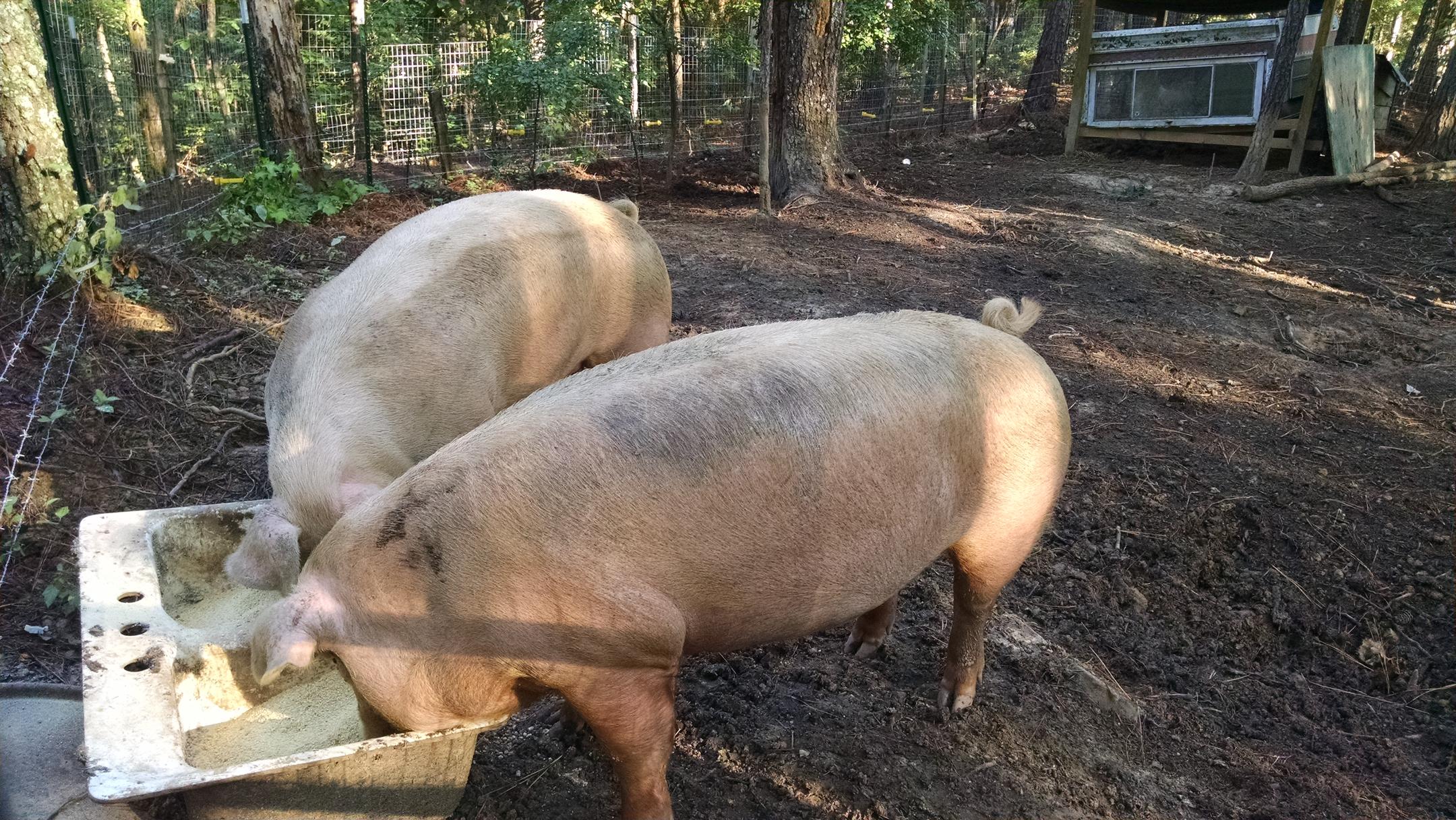Email a copy of 'From Piglets to Bacon- Part 2, by Animal House' to a friend
7 Comments
- Ad Ready Made Resources, Trekker Water Filtration SystemUsed throughout the World
- Ad L3 UNFILMED WHITE PHOSPHOR COMMERCIAL GRADE NIGHT VISION PACKAGEHuge Savings $400 off normal cost!


I am curious to hear whether or not you had a vet perform a test for trichinosis. Where i live here in Europe, it is a good idea to have the test done as lots of pork meat is eaten in a raw / near raw manner, and isn’t always cooked at temperatures that will kill the trichine eggs. Although i have been butchering pigs, both wild and domesticated for over 35 years, I have never actually experienced a positive test result (in over 750 pigs) but still have it done every time as it is un-curable in humans. The test for trichinosis, swine fever and cesium 236 (for wild boars, from eating chernobyl radiated grubs and mushrooms) costs about 5 dollars, and i get the results within 48 hours. I guess if you insured you cooked the meat thoroughly this wouldn’t be a concern. I don’t even give anything to my dog until i get the test results back, just to be sure.
Mike; I asked the man I bought the piglets from about needed vaccinations. He told when he started raising pigs he had his vet come and vaccinate all his breeding animals at a cost of $35/pig. He said he had is young pigs tested but none were positive.
I grew up in the Pennsylvania Dutch region (north Berks county) we saved the small intestine from the pigs to use as the casing for fresh & smoked pork sausage and the stomach for a dish called “Hog Maws” (Pig Stomach). Turn the intestine and stomach inside out and carefully pull through a notched stick or board to scrape the insides clean be careful not to tear it. Then turn them right side out. This process is easier if you turn an end over and pour water into the “cupped” end. The water does the work. Grind your meat, add what spices (salt & pepper) and let sit 24 hours. put into a sausage stuffer and fill the casings. As the casings fill about every 16 inches give a twist for smoked sausage and Smoke some chops. Take the stomach that you froze and thaw out and sew one end shut. Fill the stomach with a salted mixture of quartered onions, potatoes, carrots, celery smoked sausage and or pork chops and stuff into the stomach stretching it a hard as you can. It should look like a football. Sew the other end shut and bake in a roaster 350 degrees covered until done 1-2 hours. All the flavors and juices mingle and is quite good. I personally feel the stomach mussel is the sweetest part and the vegies take on a smoked flavor from the smoked meats. Then there is Scrapple Look the recipes up on your computer.
Soybeans are a complete protein source and a dietary staple in many cultures. Soy contains phytoestrogens called isoflavones that may mimic the activity of the hormone estrogen in your body. The effects of soy isoflavones on human estrogen levels are complex.
Soy is bad for the male body. You wonder why there are more beta males than real alpha men these days. Wonder why girls younger and younger are “busting out” at a earlier age than when we were kids. Soy is in almost everything these days and it ain’t good!!
You don’t need a 9 mm or a .45 acp to put down a hog. A .22 lr hollow point or round nose will do the job, you just have to know where on the pig’s head to shoot.Draw and imaginary X on the pig’s head from the eyes to the ears and where the X crosses is the spot to aim for. It is the same on a beef. the other spot or place to shoot is right behind the crown of the head, pointing your .22 more or less in a striaght line down the head towards the brain, again this also works for beef ( if you can get close to them ) ( I also know of a guy who used a 45/70, 500 gr on a beef at 50 ft ( he was a fence crawler ))
Most small meat processors that I knew growing up or worked for later on used a single shot 22 lr bolt action rifle and they were usually in the range of 2 ft to 4,5,6, ft away from the critter. In the packing plant we had electric hoists and air operated stun guns.
I’ve read that it becomes less cost-effective to grow pigs beyond 200-250 pounds. They require more food to eat per pound they grow compared to the smaller pigs. I’ve raised some up to 400 pounds but the smaller pigs’ meat is much more tender, less tendon-y… our last round weighed around 225 pounds and it’s been our best batch yet.